The fashion industry is the world’s second-largest polluter after the oil industry. From the crops to the fiber and then the garment, the whole production process of clothing contributes to different pollution, including the water, air, and soil. Besides, another part of the fashion industry makes it very unsustainable, and that’s how the workers in the sector are exploited.
There are many different aspects of why the fashion industry is a very unsustainable one today. Still, there are also great alternatives like sustainable clothing made from eco-friendly fibers and under ethical conditions. In this blog post, we share 5 reasons why you should choose sustainable clothing over fast fashion and how.
5 Reasons why you should choose sustainable clothing
Practices of the fast fashion industry
We often speak from the fast fashion industry. But what does the term fast Fashion mean exactly? Fast fashion is a design, manufacturing, and marketing method focused on rapidly producing high volumes of clothing. The garment production utilizes low-quality materials to bring inexpensive styles to the public. These cheaply made, trendy pieces have resulted in overwhelming amounts of consumption. Big fast fashion chains like H&M, Zara, and many more are releasing 52 collections per year. As a result, they are overproducing an incredible amount of clothing from which about 20% will never come to a store and are landing in landfills or getting burned. Unfortunately, all of this results in harmful impacts on the environment and garment worker’s lives.
Pollution caused by the fashion Industry
Above, we mentioned that the clothing industry is the second-largest polluter in the world. The pollution starts already on the field where the crops for cotton are growing. Cotton is called the dirtiest crop globally because it is very fragile and gets treated with lots of pesticides. Humanity produces 27 million tons of cotton each year, and the largest cotton producer in the world is India. To make those large amounts of cotton, genetically modified seeds were introduced to India, which led to monocultures destroying the soil. But what is even worse is that the farmers had to get into debt to buy these seeds and could not continue their mixed agriculture of cotton and foods anymore with the monocultural plants. Therefore they had to purchase food in addition which led many to starvation and suicide.
The pollution does not stop there in the fields; it continues through the whole process of making the garments. For example, in the process of dying, lots of chemicals are used. Then the toxic wastewaters from textile factories are dumped directly into the rivers and the ground, which toxifies the groundwater and environment. Besides, the garment workers are exposed to chemicals during their work that gets absorbed by their skin, the human body’s largest organ.
Photo from Fashion Revolution
But guess what, that’s still not where the pollution stops. Because even after we bought the clothes, they release chemicals while washing in the washing machine. Also, many laundry detergents are containing chemicals that are polluting the water too while washing the garments. On top of that, synthetic fibers such as Polyester are releasing Microplastics in the washing machine. So it’s a long chain of lots of pollution during the life cycle of these clothes. And not to forget that while wearing them, our skin absorbs the chemicals in the garment too.
Immense water consumption of the fashion industry
A tremendous amount of water is needed for cotton production alone because it’s a highly water-demanding crop. In countries where people don’t even have enough drinking water, this is a huge issue. It takes more than 7’000 liters of water to produce cotton for a single pair of jeans and 2’700 liters for a T-shirt. An excellent solution for this is organic cotton which has fantastic advantages for the planet. First of the water consumption is 91% lower, besides no pesticides are used to grow it, and therefore it’s much healthier for the soil and the people.



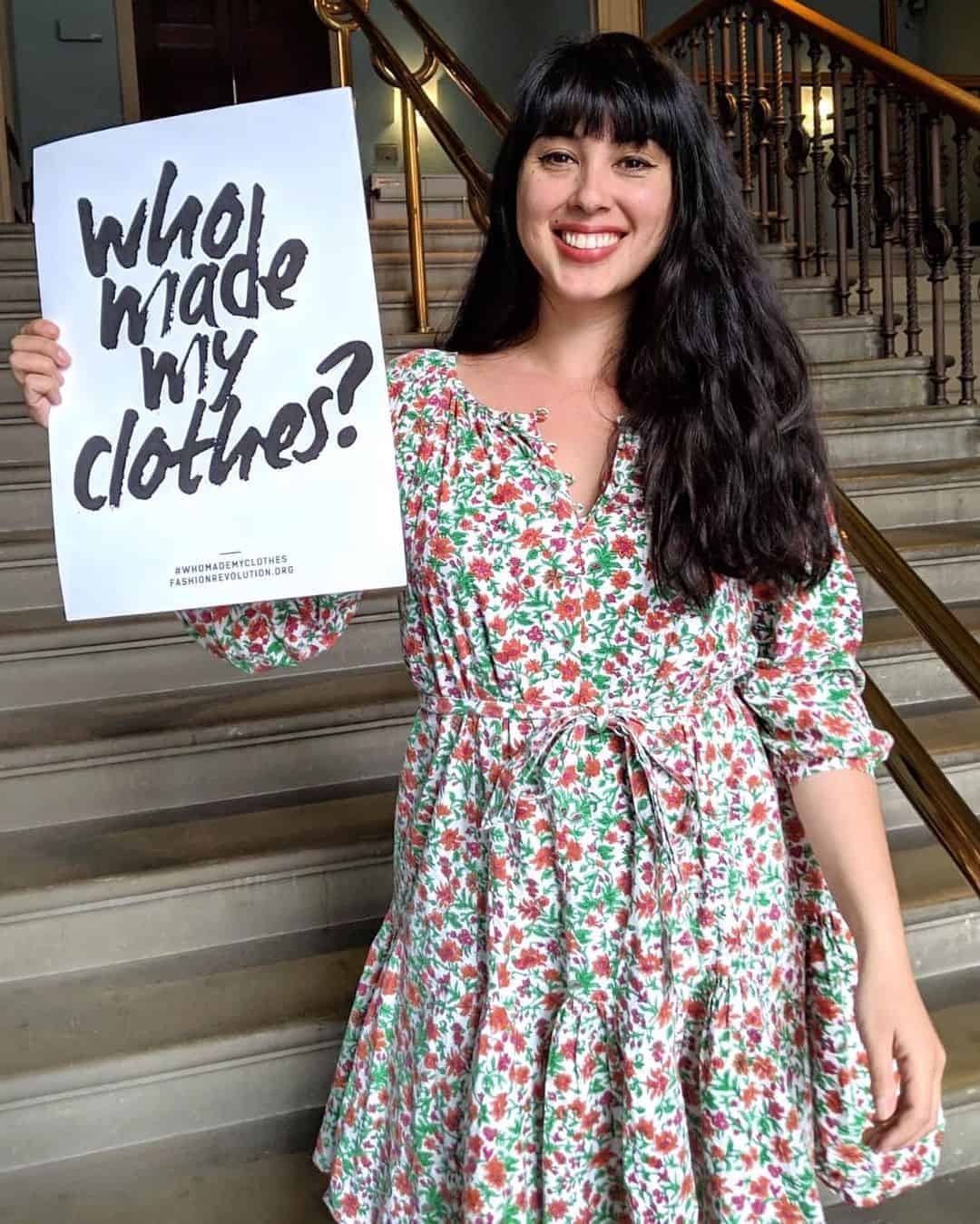
Photos from Fashion Revolution
Unethical working conditions for garment workers
Often in the shadow of the shiny and glamourous fashion world is who produces the garments. Most of the fast Fashion is made in Bangladesh, India, China, Vietnam, and Ethiopia. More than 80% of the garment workers are women between the age of 18 to 24 years. These women are working up to 16 hours a day, seven days a week, to survive. Yet, only 2% of garment workers are paid a living wage. This means that their salary is enough to pay for food and all necessities to survive. Those countries named above have minimum wages, but they are below a living wage, allowing big industries to exploit the workers.
In addition to that, those workers are risking their lives working in horrible conditions of unsafe buildings and breathing toxic chemicals every day because that billion-dollar industry refuses to build fair and safe working conditions for humans. For example, in 2013, the Rana Plaza Garment Factory in Bangladesh collapsed, taking 1’135 lives and injuring a further 2’500. Unfortunately, this is not the only catastrophe that happened. Many of these people are forced to do this work because they have no alternative to survive, plus child labor is a common issue in the fashion industry. It is, in fact, modern-day slavery that we support by buying fast Fashion. The worst is that 85% of the shoppers who buy these clothes are women and usually the same age as the garment workers.
Fashion waste
Eighty billion pieces of garments are consumed globally, and we produce around 13 billion tons of garment waste each year. On average, consumers throw away 60% of their clothing in the first year after purchasing them. Most of the thrown-away clothes are lading in landfills even though around 95% of them could be recycled. Especially clothing made from Polyester and other synthetic fibers made from oil is basically like plastic waste, poisoning the environment and need 200 years to decompose.

Sustainable Clothing
Slow Fashion
Slow Fashion is the opposite of Fast Fashion and advocates for manufacturing sustainable clothing with respect to people, the environment, and animals. It involves local artisans and the use of eco-friendly materials to preserve crafts and the environment and, ultimately, provide value to both consumers and producers. Some characteristics of slow fashion brands are high quality and sustainable materials, fewer collections and styles, and more timeless designs. Besides transparency about who produces the garments and how the conditions are, is an important part of sustainable clothing.
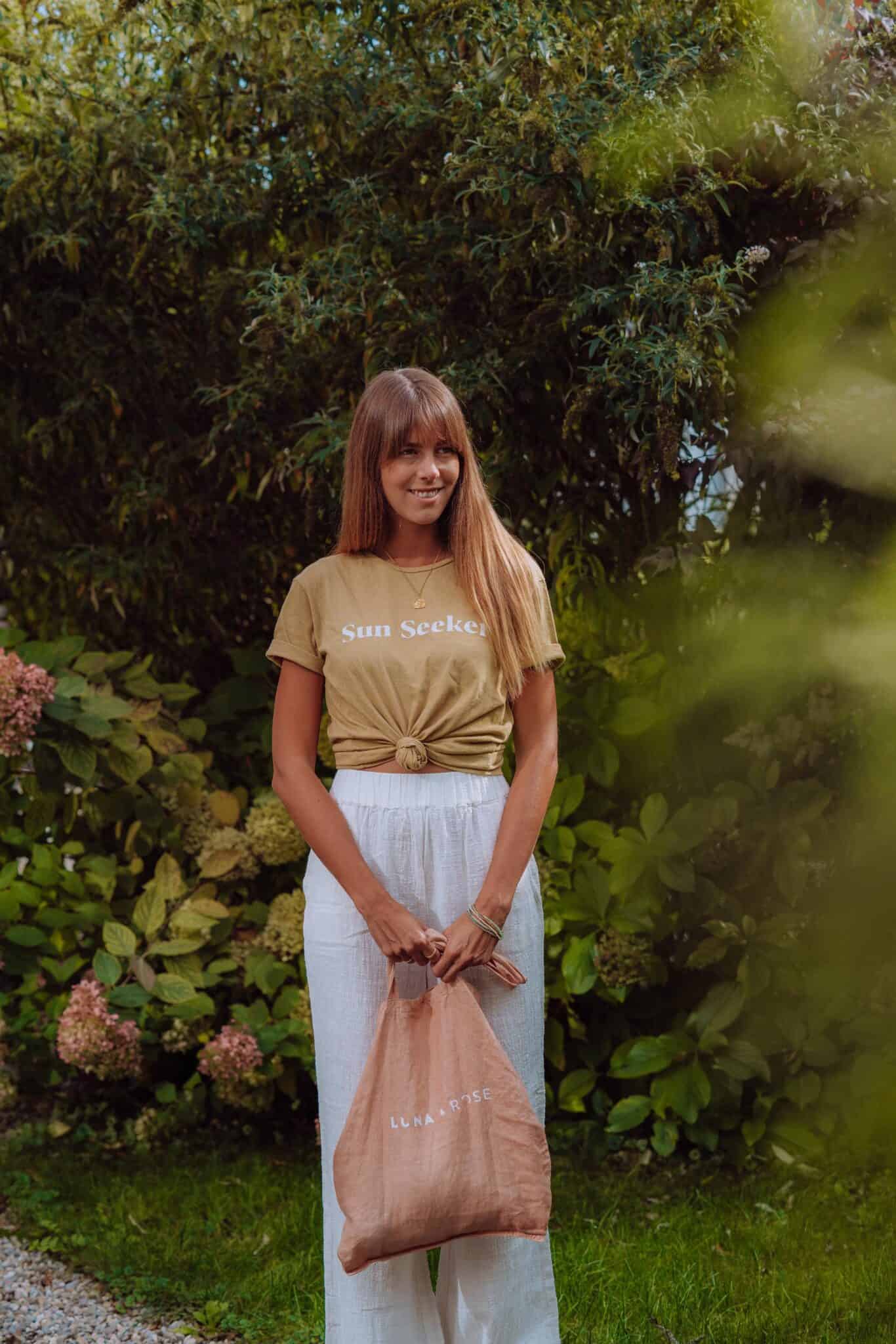
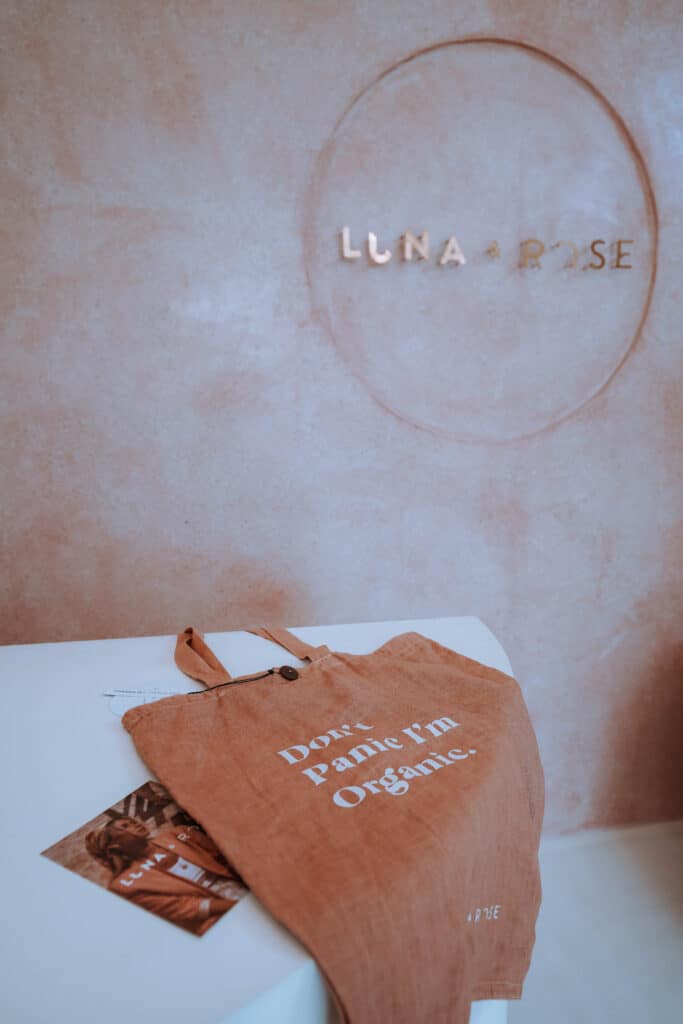

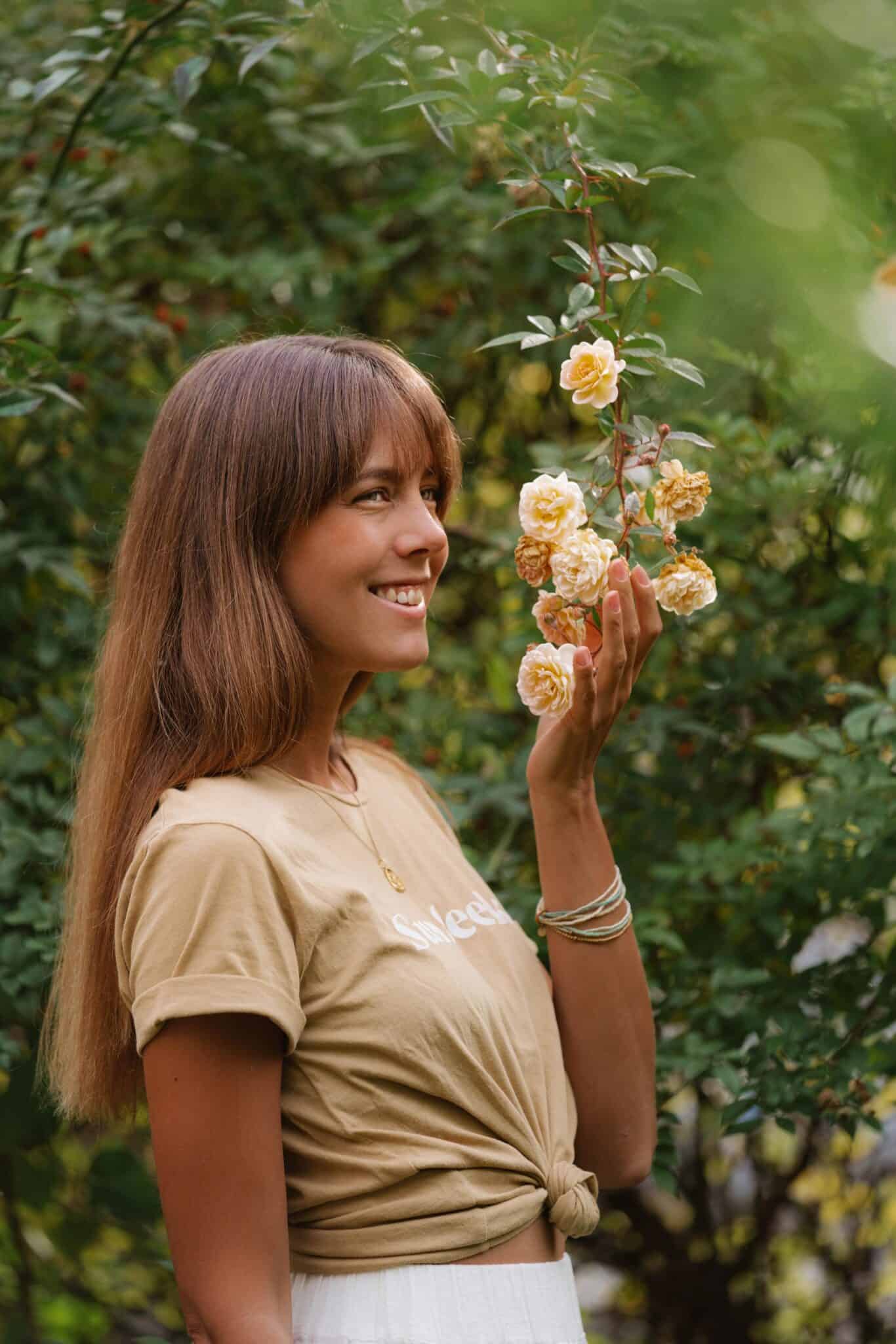
Sustainable Fibers
Natural fibers are the more sustainable clothing option over synthetic fibers such as Polyester because they are from a natural, renewable source and are decomposable. But as mentioned above, regular cotton can be a wrong choice too. 95% of all cotton is genetically modified. So when we choose a garment made from cotton, we should check the label to see if it is organic cotton.
Other natural fibers that are a more sustainable choice than cotton are Linen and Hemp. Both plants are much easier to grow and don’t need lots of water, pesticides, and chemicals to turn into a garment. In addition, they usually grow in a temperate climate which makes it, especially in Europe and the US, a more local choice as well.
Other very sustainable fibers to look out for are Tencel and Eco Vero, invented by the Austrian company Lenzing. They are cellulosic fibers and the newer, more sustainable version of Viscose or Rayon. All of them are made from the wood of different kinds of plants like Bamboo, but the production process of the fiber for Viscose or Rayon contains harmful chemicals. That’s why Tencel (or Lyocell) and Eco Vero are the more sustainable option because they are processed with a non-toxic solution and a unique closed-loop system that minimize the environmental impact. Also, the company Lenzing makes Tencel from sustainably cultivated eucalyptus trees. Besides, Tencel is breathing, cooling, regulating body temperature, hypoallergenic, and very gentle to sensitive skin. Great material for sustainable clothing and getting more and more popular among sustainable fashion brands.


Labels and Standards
Especially when we buy cotton, we should look out for labels. So often, fast fashion brands use greenwashing, claiming a garment is sustainable when only 5% of the cotton is organic. Usually, on the tag, you can find this information. However, organic cotton standard labels that some sustainable brands use, such as GOTS (Global Organic Textile Standard), means the garment is made from certified organic cotton. Another label is Oeko Tex Standard 100, which has a bit lower standards than GOTS. Both these labels mainly tell you that a garment is made from organic, natural fibers, but both do not cover the working conditions. That is why another essential label is Fair Trade, which includes social standards. These labels can help, but as always, these are standards, not meaning that it is always the best option. Many small and much more sustainable brands do not have any of these labels for financial reasons. It costs a brand to be certified. So we think these labels are a good thing to look out for when buying from more prominent brands.
Tips for buying sustainable clothing
When buying clothes, the most sustainable option is choosing second-hand. Thrifting keeps fashion circular and prevents all these clothes from being thrown away. It also reduces the need to produce new clothes and use new resources consistently. A cool thing to do is swapping clothes; this even saves you money and allows you to pass clothes on that you don’t wear anymore and get your new clothes at the same time. Clothes swaps can be found online, for example, in social media groups.
If you choose to buy new sustainable clothing, it is best to look out for small and local brands with a small collection that uses mainly natural and sustainable fibers. Check a brand’s website to see if they are transparent about who produces the clothes, and don’t be afraid to ask them who made your clothes and about their practices in general. Sustainable brands don’t have anything to hide.
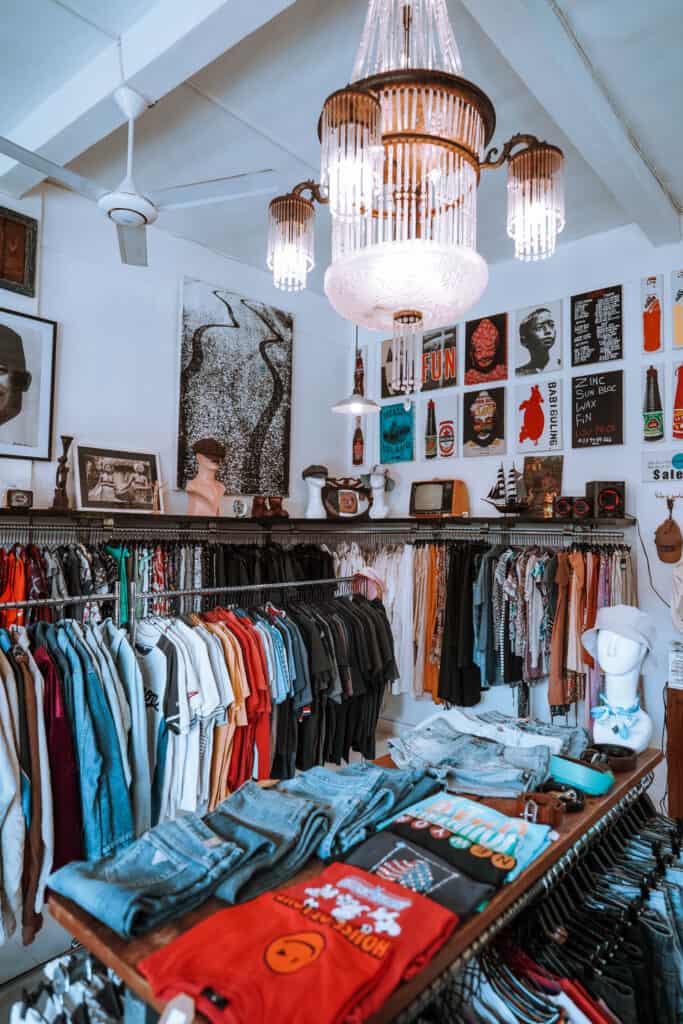
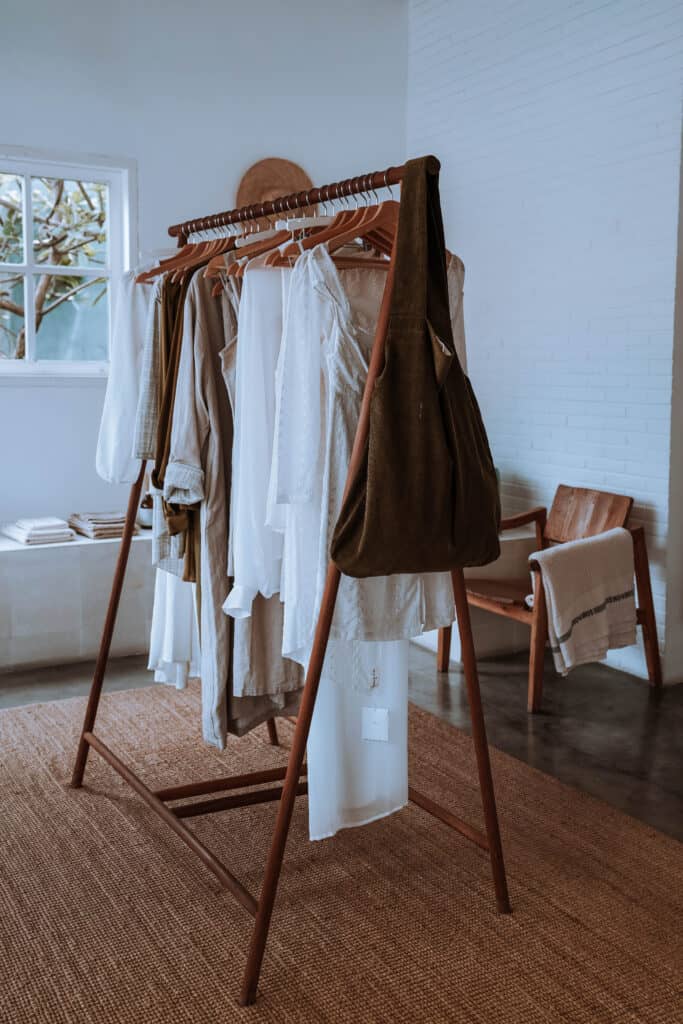
Conclusion
We always make sure that we buy the most sustainable and ethical option and choose higher-quality garments that last longer, which is an essential part of sustainability. In general, we think it’s a lot about buying less, and only the things we genuinely love to wear for longer, clothes that make us feel good and to have a personal style instead of following all the trends.












